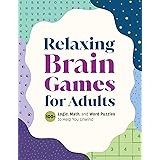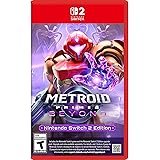Best Gaming Tablets for 2025: Your Ultimate Buying Guide
With an estimated 3.7 billion mobile gamers worldwide, finding the perfect device to fuel your passion is more crucial than ever. As our accompanying video highlights, the landscape of gaming tablets in 2025 offers a diverse array of options, each with its unique strengths and compromises. From the sheer processing muscle of Apple’s M4 chip to the surprising capabilities of budget-friendly Android contenders, understanding what makes a gaming tablet truly excel can transform your mobile gaming experience. This comprehensive guide expands on the insights shared, delving deeper into specifications, real-world performance, and the nuanced decisions behind choosing your next portable powerhouse.
Whether you’re looking to run graphically intensive titles like Genshin Impact at buttery smooth 60 frames per second or seeking a compact device for gaming on the go, the choices can feel overwhelming. Our analysis today focuses on dissecting the top contenders, providing clear, beginner-friendly explanations of what key specs mean for your gameplay. While some tablets aim for raw, unadulterated power, others prioritize value or unique form factors. Ultimately, the best gaming tablet for you will depend on your specific needs, budget, and how you plan to wield its power.
Understanding the Powerhouses: High-Performance Gaming Tablets
When it comes to high-octane gaming, certain tablets stand out by packing processors and displays designed to deliver desktop-level experiences. These devices are for gamers who demand the best graphics, highest frame rates, and most responsive gameplay possible. While these typically come with a higher price tag, the investment often translates into a future-proof device capable of handling the most demanding titles for years to come.
Apple iPad Pro 11 M4 & 13 M4: Unmatched Performance
In the world of mobile processors, Apple’s M4 chip is an absolute game-changer. Our video points out that the M4 makes other tablets appear as though they’re running on “hamster wheels,” and this isn’t hyperbole. This chip delivers zero lag in titles like Minecraft, a stark contrast to the stuttering many older iPads would exhibit. While the 11-inch model carries a starting price of $999, both the 11-inch and 13-inch M4 iPad Pros offer an unparalleled blend of raw power and thermal efficiency, especially the larger 13-inch model, which stays “cooler than my ex’s heart” even during extended gaming sessions. This superior thermal management means sustained top-tier performance without uncomfortable heat build-up, ensuring your hands stay cozy rather than cooked.
However, that immense power comes at a cost, making these devices feel like “buying a Ferrari to drive to the grocery store” for many casual users. The M4 iPads are capable of effortlessly handling demanding games like Wuthering Waves, running them “like a dream.” The real value of these tablets, beyond gaming, lies in their professional capabilities, such as 4K video editing, which they handle with incredible speed. For those who prioritize the absolute best gaming performance and comfort in a tablet form factor, the iPad Pro M4 models truly make “everything else look like ancient relics.”
Asus ROG Flow Z13 2025: Laptop-Grade Gaming in a Tablet Form
The Asus ROG Flow Z13 2025 pushes the boundaries of what a gaming tablet can be, blurring the line between a tablet and a full-fledged gaming laptop. Equipped with AMD’s Ryzen AI Max Plus 395 and Radeon 8060 S graphics, this “absolute unit” is capable of running Cyberpunk 2077 at a respectable 56.6 frames per second on medium settings at native 1600p resolution. This is a monumental achievement for a tablet, making it the “first gaming tablet that doesn’t make me want to throw it out the window.” The 13.4-inch display boasts a blistering 180 Hz refresh rate, ensuring visuals are “smoother than my pickup lines.”
Yet, its innovative spirit is met with some real-world challenges. A significant hurdle, as the video notes, is the limited support for AMD’s FSR 3.0 from game developers, who often prioritize Nvidia’s technologies. This means that while the hardware is incredibly capable, you might not always get to experience its full potential with every game. Despite this, the ROG Flow Z13 is a resounding “yes” for serious gamers, offering “basically a laptop disguised as a tablet” that genuinely delivers on the promise of high-end portable gaming without being a “complete joke.” Its unique blend of power and versatility makes it a standout choice for those who crave a truly hybrid gaming experience.
Samsung Galaxy Tab S10 Plus: The Android Flagship for Gamers
The Samsung Galaxy Tab S10 Plus makes a strong case for Android’s place in the high-performance gaming tablet market. Powered by the Snapdragon 8 Gen 3 processor, this device “absolutely destroys its predecessor,” achieving impressive Geekbench 6 multicore scores of 7,026. This translates into smooth gameplay for demanding titles like Genshin Impact on high settings, all while “staying cooler than my ex’s heart.” The ability to handle intensive tasks such as editing 4K video on CapCut without turning into a “portable heater” further underscores its robust engineering and thermal management.
The primary hurdle for the Tab S10 Plus is its premium price, which “hits harder than student loan debt.” This positions it as the “best Android gaming tablet money can buy,” but potential buyers must weigh the cost against their budget. For Android loyalists seeking top-tier performance, a stunning display, and efficient multitasking capabilities, this tablet offers a compelling package. It’s a testament to how far Android tablets have come in closing the performance gap with their Apple counterparts, offering a premium experience for those willing to invest.
OnePlus Pad 3: A Contender for Android Gaming Supremacy
The OnePlus Pad 3 emerges as a formidable competitor in the Android gaming tablet space, leveraging the Snapdragon 8 Elite processor to achieve an impressive 9,040 on Geekbench 6 multicore. This score “absolutely demolishes Samsung’s Tab S10 FE Plus,” indicating a significant leap in processing power that directly benefits gaming performance. The tablet effortlessly runs triple-A games like Genshin Impact “beautifully,” with a level of performance that makes “other Android tablets look like they’re running on potato power.”
Despite its gaming prowess, one area of concern is the battery life. While a 12,140 mAh battery sounds substantial, the video reveals it only lasts 8 hours and 53 minutes, a noticeable decrease compared to its predecessor’s 11 hours and 43 minutes. This reduction in longevity is “like upgrading your car but somehow getting worse gas mileage.” However, for gamers prioritizing raw power and smooth gameplay above all else, the OnePlus Pad 3 remains a solid “yes.” Its exceptional performance for gaming makes it a top choice for those who want a premium Android experience without necessarily matching Apple’s highest price points.
Xiaomi Pad 7 Pro & Xiaomi Pad 7: Raw Power at a Competitive Price
Xiaomi continues to impress with its Pad series, offering high-end specifications at competitive price points, making top-tier gaming more accessible. The Xiaomi Pad 7 Pro, described as a “beast,” is equipped with a Snapdragon 8 S Gen 3 chipset, allowing it to push Genshin Impact at a solid 60 frames per second on ultra settings. While it can get “toastier than my ex’s attitude” at 38.4 degrees Celsius, this temperature is often a trade-off for such high performance. The 144 Hz display ensures “everything buttery smooth,” enhancing the visual experience significantly. However, a notable omission is cellular connectivity, implying users are expected to live in a “Wi-Fi Wonderland.” Despite this, its “flagship performance without selling your kidney” makes it a definite “yes” for value-conscious power users.
The standard Xiaomi Pad 7, also featuring the Snapdragon 8 Gen 3, similarly allows for maxed-out Genshin Impact at 60 frames per second. Like its Pro sibling, it can become a “portable heater” under heavy load but capably handles games like Fortnite at epic settings. While there might be “better options if you don’t mind spending a bit more cash,” the Pad 7 remains “solid for the price.” Both Xiaomi pads represent excellent choices for gamers seeking maximum performance without breaking the bank, providing an immersive experience for most demanding mobile titles.
Lenovo Legion Tab Gen 3: Compact Powerhouse for Dedicated Gamers
For gamers who prefer a more compact form factor without sacrificing power, the Lenovo Legion Tab Gen 3 is a compelling choice. This “compact gaming monster” houses a Snapdragon 8 Gen 3, enabling it to hit 120 frames per second in most games. Despite its ability to get “hot enough to cook an egg at 46.8 degrees Celsius” under intense load, its raw performance is undeniable. The 8.8-inch screen, combined with a blazing 165 Hz refresh rate, ensures that gameplay is “smooth as butter,” providing a highly responsive visual experience.
The tablet’s size, however, places it in an “awkward size limbo” that makes one-handed use challenging. Despite this ergonomic consideration, the Legion Tab Gen 3 is a strong “yes” for dedicated mobile gamers. It’s lauded as “like having a gaming handheld that actually knows what it wants to be,” effectively bridging the gap between a traditional gaming handheld and a larger tablet. Its focused design on delivering a premium gaming experience in a manageable size makes it an excellent option for those prioritizing portability without compromising on horsepower.
RedMagic Nova: The Fan-Cooled Beast
The RedMagic Nova takes mobile gaming cooling to an entirely new level by incorporating a literal 20,000 revolutions per minute fan inside. This internal cooling system, which makes the tablet sound “like a tiny jet engine,” is incredibly effective at keeping the device cool while running demanding games like Zenless Zone Zero at max settings. This active cooling directly translates into sustained high performance, preventing thermal throttling that often plagues other high-end gaming tablets during extended play sessions. The 144 Hz display, paired with an astounding 840 Hz touch sampling rate, ensures that every tap and swipe registers with lightning speed, making your fingers “feel like they’re conducting a symphony” in games like Dead Cells.
The RedMagic Nova is a resounding “yes” for serious mobile gamers who crave an uncompromised experience. The integration of a dedicated fan, while adding a unique auditory signature, underscores its commitment to delivering peak performance. It sends a clear message: “I’m serious about mobile gaming.” For those who want to push their games to the absolute limit and maintain optimal performance without overheating concerns, this tablet offers a truly unique and powerful solution.
Balancing Performance and Value: Mid-Range & Budget Gaming Tablets
Not every gamer needs or wants to spend top dollar on a tablet. The mid-range and budget segments offer compelling options that strike a balance between performance, features, and affordability. These tablets are perfect for casual gamers, those new to mobile gaming, or users who want a device capable of running popular titles without breaking the bank. They may require some graphic settings adjustments, but they still deliver enjoyable gaming experiences.
Apple iPad Air M3 (11-inch & 13-inch): A Smart Apple Choice
The Apple iPad Air M3, available in both 11-inch and 13-inch variants, presents a strong proposition for Apple enthusiasts seeking a capable gaming tablet without opting for the Pro’s hefty price tag. The M3 chip allows for smooth Genshin Impact performance on default settings, proving its robust processing capabilities. The 13-inch model, for instance, runs Genshin Impact at 60 frames per second on high settings “like it’s eating cereal for breakfast,” demonstrating its significant power.
However, pushing the graphics to maximum on either model can lead to stuttering, indicating that the M3, while powerful, isn’t always capable of maintaining a consistent 60 FPS on the absolute highest settings, contrary to some “Apple fanboys promised.” While it’s “basically overkill for mobile gaming,” the M3 chip also excels in productivity tasks, exporting 4K video in just over 5 minutes. The iPad Air M3 is a “yes” for those who want a solid Apple gaming tablet that “won’t completely destroy your wallet,” offering a compelling mix of performance and value, making your “MacBook jealous” in some areas.
Apple iPad Mini 7th-gen: Portable Gaming Power
The Apple iPad Mini 7th-gen defies expectations by proving that “size doesn’t always matter” when it comes to gaming performance. This “little pocket rocket” packs the A17 Pro chip, enabling it to run Assassin’s Creed Mirage on high settings without stuttering. This level of performance in such a compact device is genuinely surprising, demonstrating that the A17 Pro “punches way above its weight class.” Its small footprint makes it incredibly portable and convenient for gaming on the go, without the bulk of larger tablets.
The primary consideration for the iPad Mini is its 8.3-inch screen, which might make you “squint like you’re trying to read the fine print on a sketchy contract” during extended gaming sessions. Despite the smaller display, it’s a resounding “yes” for its unique niche. It’s essentially “a Nintendo Switch that doesn’t suck,” offering a premium gaming experience in a highly portable format. For gamers who prioritize ultimate portability and powerful performance in a small package, the iPad Mini 7th-gen is an excellent choice.
Samsung Galaxy Tab S9 FE Plus: Casual Gaming, Solid Value
The Samsung Galaxy Tab S9 FE Plus positions itself as a respectable option for casual gamers, capable of running Genshin Impact at 60 frames per second on high settings “like a champ.” Powered by the Exynos 1380 processor, it handles popular titles effectively, especially when graphics settings are managed appropriately. However, the video rightly points out that the graphics may appear “more compressed than a YouTuber’s apology video,” and its 3DMark WildLife score of 2,953 is significantly lower than the regular Tab S9’s 14,831. This disparity is “like bringing a water gun to a Call of Duty match,” highlighting its more modest graphical capabilities.
Despite these limitations, the Tab S9 FE Plus is a “maybe” for its target audience. It’s “decent for casual gaming” and feels like Samsung’s offering for those who want a budget-friendly option that “won’t completely embarrass you at LAN parties.” For users who prioritize a balanced tablet experience with capable, albeit not top-tier, gaming performance, this device offers solid value within the mid-range Android market. It’s a pragmatic choice for everyday use with the bonus of handling most mobile games well.
Xiaomi Redmi Pad Pro: The Budget Warrior for Mobile Games
The Xiaomi Redmi Pad Pro stands out as a “budget warrior” that genuinely surprises with its capabilities, especially for its price point. While you’ll need to “lower those graphic settings faster than I lower my standards on dating apps,” it actually runs Genshin Impact, a feat not all budget tablets can claim. The Snapdragon 7 S Gen 2 chipset does its “best impression of a gaming chip,” providing enough power for a respectable experience with many popular mobile titles. It demonstrates that enjoyable mobile gaming doesn’t always require a premium investment.
However, at 571 grams, this tablet’s weight can be a significant factor. Extended gaming sessions might make your arms “more sore than a gym session after 30 minutes of gaming.” Despite the weight, the Redmi Pad Pro is a definite “yes.” It’s likened to “that friend who’s broke but still somehow manages to have fun at every party,” offering a solid gaming experience for its category without demanding a high financial commitment. For budget-conscious gamers, it’s a highly recommended option.
Samsung Galaxy Tab A9 Plus: Entry-Level Gaming on a Shoestring Budget
The Samsung Galaxy Tab A9 Plus enters the arena as a true “budget warrior,” proving that even at an entry-level price point, you can enjoy mobile gaming. It smoothly runs Genshin Impact on medium settings, showcasing that “sometimes the underdog can throw punches.” This capability makes it accessible for those new to mobile gaming or with very tight budgets. At just $220, it’s “cheaper than most people’s monthly coffee addiction,” offering an incredibly affordable gateway into the world of tablet gaming.
Naturally, there are trade-offs. Trying to push it to high settings will cause it to “lag harder than Internet Explorer loading a meme,” as its graphics chip is about “as powerful as a calculator trying to run Crisis.” This means gamers must manage their expectations regarding graphical fidelity. Nevertheless, it’s a “maybe” for its specific niche. It’s “like that friend who’s not the prettiest but has a great personality and won’t bankrupt you.” For those seeking the absolute lowest barrier to entry for casual mobile gaming, the Tab A9 Plus is a viable, no-frills option.
Tablets with Specific Considerations: What to Watch Out For
Not every tablet is a straightforward recommendation, even if it carries a familiar brand name or impressive-sounding specs. Some devices come with specific caveats that might make them less suitable for dedicated gaming, despite other appealing features. Understanding these limitations is crucial to avoid disappointment and ensure your chosen gaming tablet aligns with your expectations and needs.
Apple iPad 11th-gen: Dated Display for 2025 Gaming
The Apple iPad 11th-gen, while still leveraging the A16 chip from 2022 to run most games “decently,” faces a significant hurdle in the 2025 gaming landscape: its 60 Hz display. This refresh rate, while standard a few years ago, now feels “like watching Netflix on a potato” when compared to the 120 Hz, 144 Hz, or even 165 Hz screens prevalent on other gaming tablets mentioned. In a market where smooth visuals and responsiveness are paramount for an immersive experience, a lower refresh rate can make fast-paced games feel less fluid.
Paying premium prices for “last-generation specs” for gaming is a deal-breaker for many, making this a clear “no” recommendation. It’s akin to “buying expensive wine and mixing it with soda – just wrong on every level.” While the A16 chip itself remains capable for many mobile titles, the outdated display technology significantly detracts from its appeal as a dedicated gaming tablet in 2025. For general tablet use it’s fine, but for competitive or visually demanding gaming, better options exist.
Samsung Galaxy Tab S10 Ultra: A Giant with a Trade-off
The Samsung Galaxy Tab S10 Ultra is truly a “14-inch monster” capable of handling 120 Hz gaming in PUBG Mobile, which on paper sounds impressive. Its sheer screen size offers an expansive canvas for mobile gaming, immersing players in their virtual worlds. Furthermore, the inclusion of a MediaTek processor that “actually doesn’t suck” is a notable and positive surprise, indicating improvements in performance from this chipset manufacturer. However, the tablet’s significant size comes with a substantial ergonomic drawback: its weight.
Weighing a hefty 700 grams, holding this “brick for more than 10 minutes” is likely to cause arm fatigue, potentially “filing a complaint” for discomfort. This makes long gaming sessions challenging and diminishes its portability as a handheld device. Additionally, the battery life took an unexpected hit compared to its predecessor, “like my motivation on Monday mornings.” While powerful and visually impressive, these physical and battery limitations make it a “maybe” recommendation. It’s “basically a portable gaming monitor that occasionally remembers it’s supposed to be a tablet,” best suited for stationary gaming or those who prioritize screen real estate above all else.
Huawei MatePad Pro 13.2 2025 & 12.2 2025: Software Challenges
The Huawei MatePad Pro tablets, particularly the 13.2 2025 and 12.2 2025 models, present a conundrum for gamers. The 13.2-inch version runs Mobile Legends on ultra settings with ease, showcasing its hardware prowess. The 12.2-inch variant boasts a “gorgeous tandem OLED display” that makes everything “look like a movie,” complemented by a smooth 144 Hz refresh rate. On the surface, these features promise an excellent gaming experience.
However, the significant impediment, as the video highlights, is the absence of the Google Play Store. Users are “stuck with Huawei’s app selection,” which feels “like being trapped in a parallel universe.” This severely limits access to a vast library of popular mobile games and applications crucial for a modern gaming tablet. Trying to install your favorite games becomes “like solving a Rubik’s cube blindfolded.” While the Kirin 9000 W chip tries its best, the 13.2-inch model scores “lower than my grandma’s iPad in every single gaming benchmark,” achieving a pathetic 42 frames per second in GFX Bench compared to the iPad Pro’s 284 FPS. This combination of hardware underperformance (for its class) and software limitations makes both Huawei tablets a “no” for dedicated gaming. As the video succinctly puts it, “what’s the point of having a Ferrari if there are no roads to drive it on?”
Microsoft Surface Pro 11: ARM Compatibility Hurdles
The Microsoft Surface Pro 11, featuring the Snapdragon X Elite processor, sounds promising with its “fancy” chip. However, for PC gamers hoping to extend their Steam library to a tablet, it presents significant “ARM compatibility issues.” As the video candidly shares, “half your Steam library refuses to even launch,” with classics like Elden Ring “straight up telling me to go screw myself because it doesn’t support ARM hardware.” This means you might spend “more time troubleshooting games than actually playing them,” a frustrating prospect for any gamer.
The core problem lies in the fact that many PC games are compiled for x86 architecture, not ARM, requiring emulation or specific ARM-native versions, which are often scarce. This makes the Surface Pro 11 a clear “no” for gaming, “unless you enjoy the thrill of wondering whether your favorite game will work or crash spectacularly.” While the device may excel in productivity tasks, its current state of game compatibility severely hampers its utility as a gaming tablet. For gamers, this device introduces too many variables and potential disappointments.
Ultimately, choosing the best gaming tablets for 2025 involves weighing raw power against price, portability, and crucial software compatibility. The insights shared here, building on our video’s straightforward recommendations, should empower you to make an informed decision, ensuring your next gaming tablet enhances every tap, swipe, and virtual adventure.









